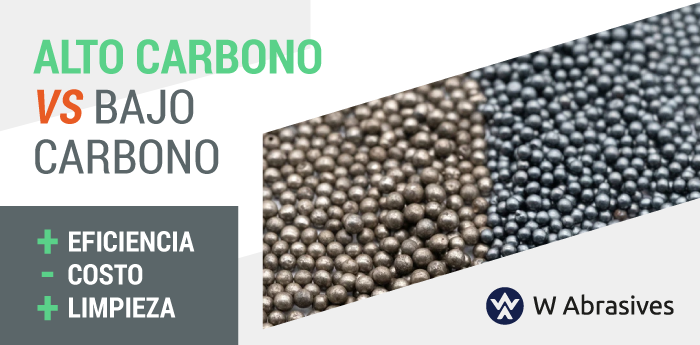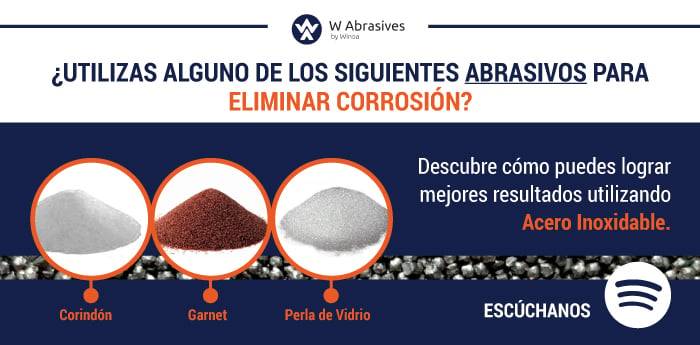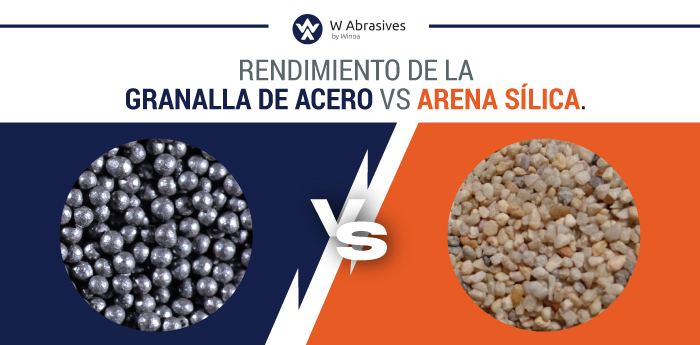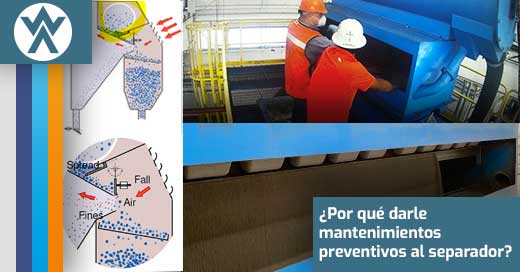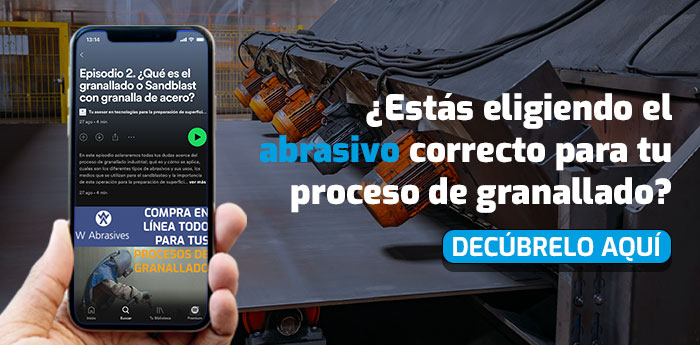
We invite you to listen to this blog through our podcast in your favorite medium
Shot blasting, also known as abrasive blasting, is even known by some as "sandblasting" by its English term, although the latter concept refers exclusively to blasting with silica sand. It is a process where an abrasive material is propelled by means of air, water or centrifugal force against a surface.
This method is used to clean, strengthen or prepare surfaces.
There are many variants in the procedure to throw the abrasive medium but the most common is to do it through a machine with wheels, which drive the abrasive against the target, that is, they convert the energy of an electric motor into kinetic abrasive energy, using to This is the rotation of a turbine. Or it can also be done through air blasting where the abrasive is pneumatically accelerated using compressed air and projected through nozzles onto the substrate.
Some of the uses of shot blasting are:
- Cleaning of castings, since in general the casting is placed in sand molds for which it is very important to remove it.
- Cleaning of forgings to remove the scale left by heat treatments.
- Cleaning and elimination of rust in parts that have been in the open.
- Strengthening shot peening to increase resistance to fatigue in components such as turbines, motors, springs, gears, etc.
- Cleaning and preparation of surfaces where anticorrosive coatings such as paints, rubbers, electrolytic coatings, etc. will be applied.
- Removal of previous coatings.
- Alter shape and polish, smooth, or deburr surfaces.
- There are many types of blasting applications, each requiring different types of abrasive materials, called "the medium."
Some of the most common are:
- Aluminum oxides. Which are characterized by their hardness and resistance.
- Glass beads. For applications requiring a smooth, shiny finish.
- Plastics The best medium for cleaning molds, blasting plastic parts or in applications where loss of substrate material is not allowed.
- Silicium carbide. The hardest shot blasting material available, for challenging surfaces.
- Walnut shells. For polishing soft metals, fiberglass, wood, plastic.
- And of course, steel abrasives that, unlike other abrasives, provide profitability due to their wide range of hardness and high recyclability. They are available in two shapes, spherical shot and angular shot, and can be combined in both shape and size. It can be used on a variety of surfaces to effectively remove contaminants, texturize a surface for proper adhesion of a top coat, or in peening applications to strengthen. Size, hardness, and shape play an important role in material selection.
W Abrasives with more than 60 years in the market has the knowledge and experience necessary to support you in selecting the steel abrasive for your blasting applications, but above all to help you better understand the process and thus improve and make it more efficient. Do not hesitate to contact us for specialized advice, acquire tools to help control the process or obtain training.





